Table of Contents
Developed by the Diary Queens: Heather Alexander, Maire Nic Niocaill, Kate Winsor, and Kristen Milley. CC
To address the problems of marine plastics and public science, we created an educational tool geared towards children: the Ice Cream Scoop Trawl. This is a simple technology that children can help make and use it to learn about marine plastics. It is used to test for presence of marine plastics at the water’s surface. An ice cream container is modified so that water can pass through it and fitted with a handle so that a child can pull it through water. The trawl features two types of mesh, one larger to prevent large debris from passing through, and on the further end, a finer, screen mesh to prevent collected samples from escaping. Reused, affordable and readily available materials are used in its design to prevent cost barriers for individuals interested in building their own technology. Additionally, its affordability may be an attractive feature to organizations such as summer camps, schools, environmental awareness programs, who wish to incorporate the Ice Cream Scoop into their curriculum.
The making and use of the Ice Cream Scoop Trawl engages children with the marine environment and allows them to see the presence of plastics in the ocean. Research has found that learning attitudes and values related to environmental conservation is important in young children to promote action (Cutter-Mackenzie & Edwards, 2014). Further, children learning as active participants in citizen science contributes not only to a fuller understanding of environmental issues for the child but also supplies additional scientific data and involvement, valuable to researchers and the general population (Miczajka, Klein & Pufal, 2015).

Full Technology Report for the Ice Cream Scoop is here.
Materials
- Empty Ice Cream container (lid is not needed)
- Skipping rope
- Old shoelaces – coloured ones look cool
- 12 inch square pieces of mesh that have different size holes (We used chicken coop mesh and plastic screen door mesh. You could use pieces of old fishing nets, plastic snow fencing or old hockey nets instead of chicken coop mesh).
- Wire Cutter
- Scissors
Building Instructions
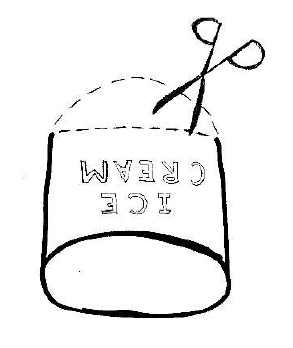
Step 1: Cut out the bottom of your Ice cream container with scissors

Step 2: Punch two holes on opposite sides of the container close to the wider end of the container with scissors.
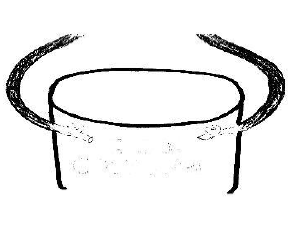
Step 3: Pass one end of the skipping rope (or other rope) through the punched holes in the container and then tie a knot on the inside. Do the same on the other side.
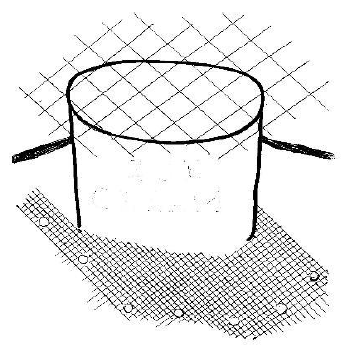
Step 4: Cut holes the size of the shoe lace top all the way round the finer mesh about an inch apart. Sit on the container on the fine mesh and lay the larger mesh on top
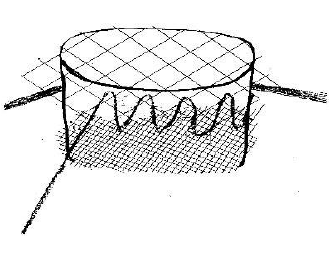
Step 5:Using the shoelace (or other string that won’t contaminate your sample), “sew” the two meshes together in a zig sag pattern.

Step 6: When you’ve woven the string all the way around the container, tie the ends of the shoe laces together. Congratulations! You now have an Ice Cream Scoop!

Have you built or used the LADI trawl? Please take our survey to help us keep improving!
How to Use the Ice Cream Scoop
Deployment: Since half of all marine plastics float, the Ice Cream Scoop is designed to be pulled behind the user on the surface of the water rather than midway between seafloor and surface. Enter a shallow area of water and lower the scoop into the water in a sideways position. Using the skipping rope handle to pull the scoop, begin walking with the scoop following behind you. This towing can be done in intervals, ensuring to remove the scoop from the water so any collected materials can be observed and removed from the trawl if plastics are present and stored for analysis. The scoop can then be re-submerged in the water and pulled again, this time pulling in the opposite direction, to avoid tow direction bias (Lippiatt, Opfer, & Arthur, 2013).


Samples: Remove samples from the Scoop immediately to be analyzed in the field or stored and sorted later. Divide objects caught by the Scoop into two categories: organic debris and human-made items. Human-made objects can be further divided into plastics and non-plastics.

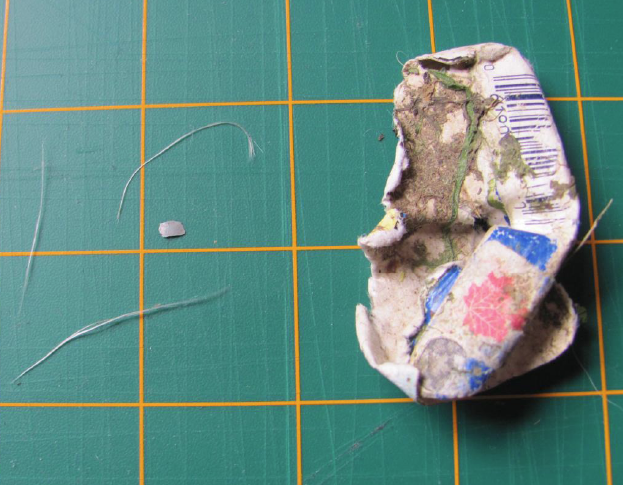
The Ice Cream Scoop uses presence sampling to identify whether there are in fact plastics in a specific water area, it is not intended to provide information on the quantity of plastics in the water nor give an impression of the presence of plastics across a larger area such as an entire beach or bay.
Full Technology Report for the Ice Cream Scoop is here.
Have you built or used the LADI trawl? Please take our survey to help us keep improving!

Ice Cream Scoop by dairy queens is licensed under a Creative Commons Attribution 4.0 International License.
Works Cited
- Cutter-Mackenzie, A., & Edwards, S. (2014). Everyday environmental education experiences: The role of content in early childhood education. Australian Journal of Environmental Education, 30(1), 127-133.
- Lippiatt, S., Opfer, S., & Arthur, C. (2013). Marine debris monitoring and assessment: Recommendations for monitoring debris trends in the marine environment. NOAA Technical Memorandum NOS-OR&R, 46.
- Miczajka, V., Klein, A., & Pufal, G. (2015). Elementary school children contribute to environmental research as citizen scientists. Public Library of Science One. doi: 10.1371/journal.pone.0143229
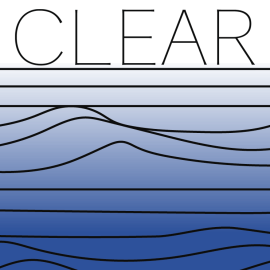
3 Comments
Comments are closed.